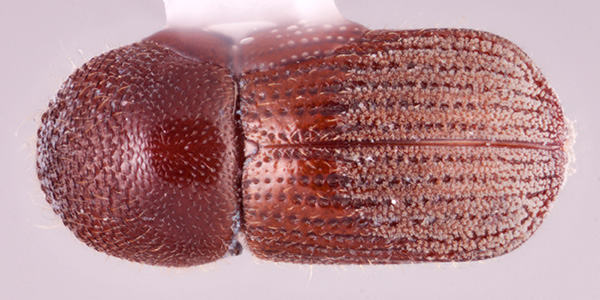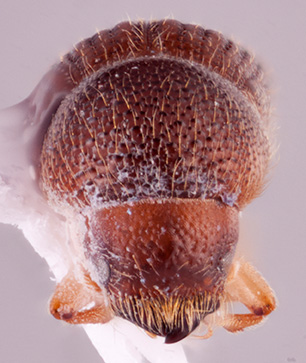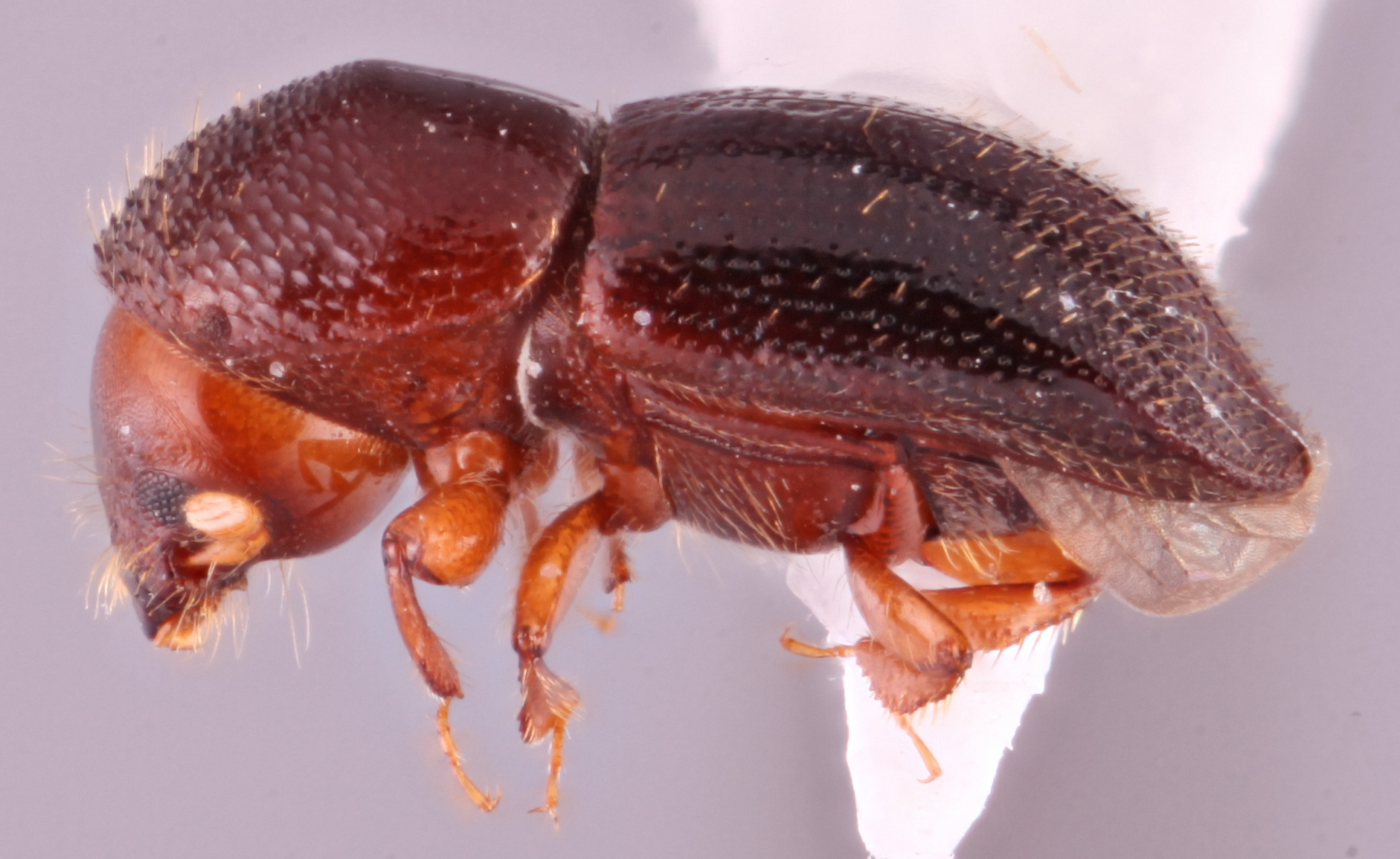Leptoxyleborus
|
Leptoxyleborus sordicauda; R.K. Osborn |
|
Leptoxyleborus sordicauda; R.K. Osborn |
|
Leptoxyleborus sordicauda; R.K. Osborn |
|
Leptoxyleborus sordicauda; R.K. Osborn |
|
Leptoxyleborus machili; S.M. Smith |
Taxonomy
Leptoxyleborus Wood, 1980: 94.
Diagnosis
1.90−3.60 mm long; 2.15−2.52 times as long as wide. Leptoxyleborus can be distinguished by the elytralelytral:
pertaining to the elytra
declivitydeclivity:
downward slope of either the pronotum or elytra
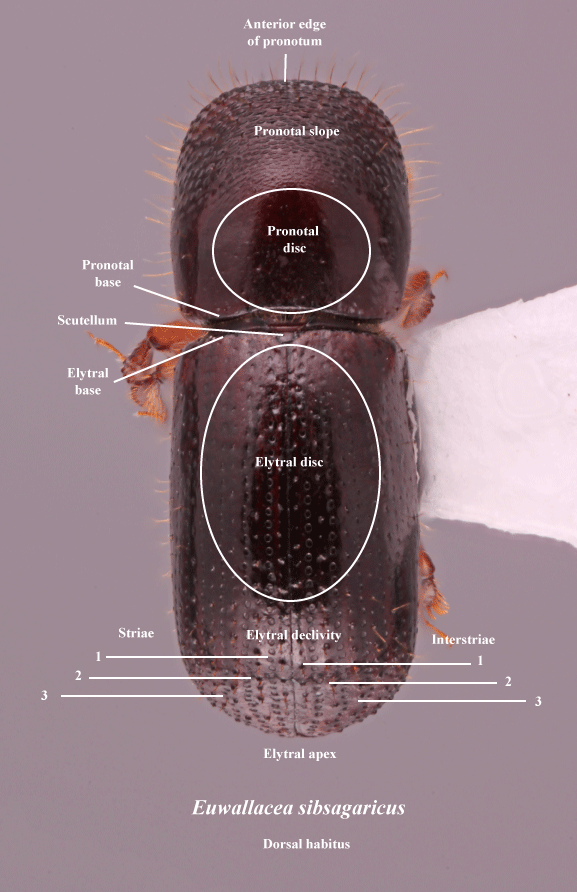 extremely flat and broad, especially laterally; posterolateralposterolateral:
extremely flat and broad, especially laterally; posterolateralposterolateral:
relating to end of the side part/portion
 declivitaldeclivital:
declivitaldeclivital:
pertaining to the elytral declivity
costacosta:
elevated ridge that is rounded at its crest, not necessarily with sharp appearance elevated, carinate, ending at interstriaeinterstria:
elevated, carinate, ending at interstriaeinterstria:
longitudinal spaces along the elytra between the striae, which is not as<br />
impressed and bear smaller punctures.
 7; surface covered with scalesscale:
7; surface covered with scalesscale:
a flattened seta
 or minute star-shaped scales; pronotumpronotum:
or minute star-shaped scales; pronotumpronotum:
the dorsal surface of the thorax
elongate, appearing conical from dorsaldorsal:
of or relating to the upper surface; opposite of ventral
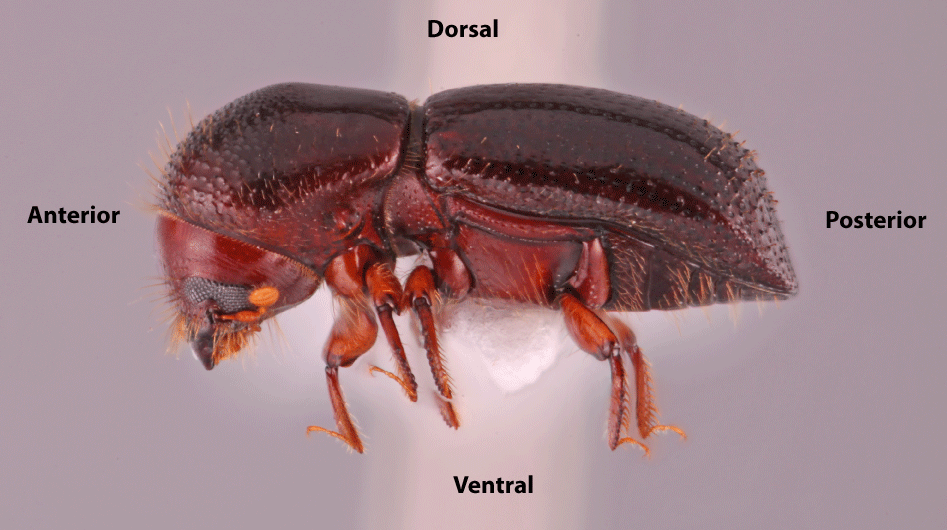 aspect; antennalantennal:
aspect; antennalantennal:
pertaining to the antennae
club obliquely truncateobliquely truncate:
nearly truncate but rounded not flat in lateral view
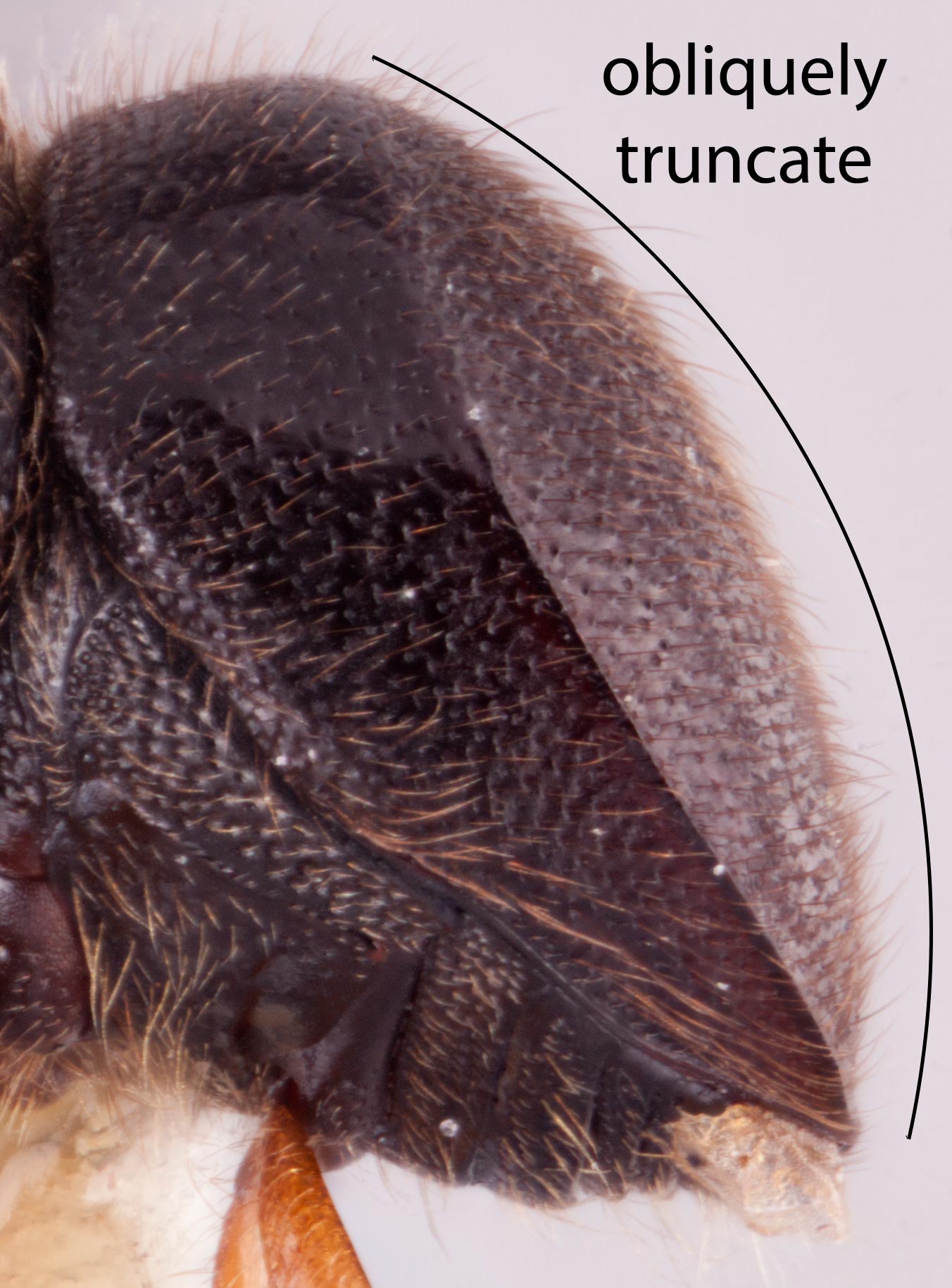 , type 2, with segment 1 nearly covering the entireentire:
, type 2, with segment 1 nearly covering the entireentire:
without marginal teeth or notches
 posterior face; submentum slightly impressedimpressed:
posterior face; submentum slightly impressedimpressed:
a depression in a surface
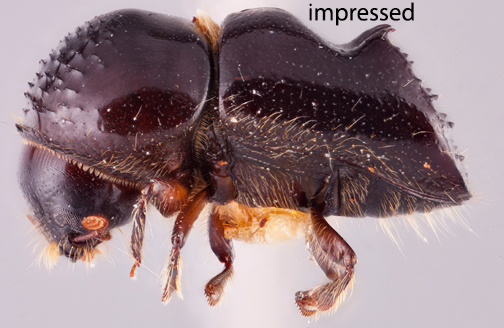 , shaped as a large triangle; protibiaprotibia:
, shaped as a large triangle; protibiaprotibia:
tibia of the first pair of legs
narrow, with fewer than 6 denticles; scutellumscutellum:
a shield-like sclerotized plate located at the midpoint of the elytral base
flat, flush with elytra; procoxae contiguous; mycangial tufts absent; and elytraelytron:
the two sclerotized forewings of beetles that protect and cover the flight wings
unarmed.
May be confused with
Distribution
Paleotropics and Oceania
Gallery system
Consists of a system of irregularly branched tunnels without brood chambers, lying more or less in one transverse plane. When the host tree has thick bark, transverse surface galleries may also be made between the bark and wood (Beeson 1930Beeson 1930:
Beeson CFC. 1930. The biology of the genus Xyleborus , with more new species. Indian Forest Records 14: 209-272., Browne 1961bBrowne 1961b:
Browne FG. 1961b. The biology of Malayan Scolytidae and Platypodidae. Malayan Forest Records 22: 1-255.).


